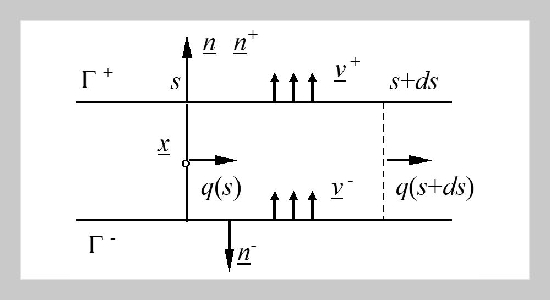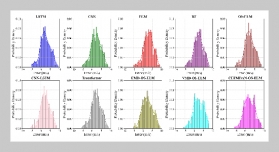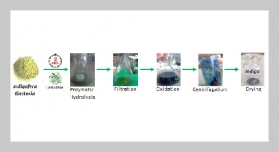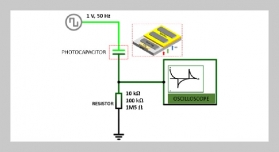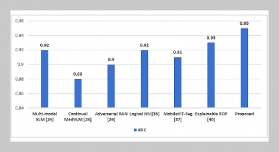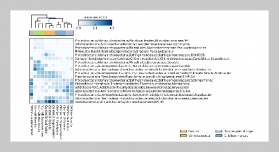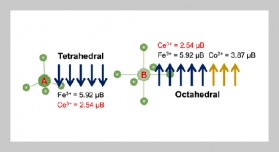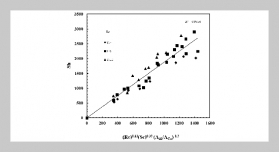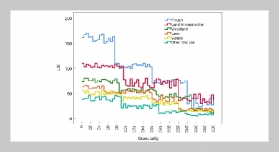- [1] T. Nguyen, M. Vu, N. Tran, N. Dao, and D. Pham, (2020) “Stress induced permeability changes in brittle fractured porous rock" International Journal of Rock Mechanics and Mining Sciences 127: 104224. DOI: 10.1016/j.ijrmms.2020.104224.
- [2] M. N. Vu. “Modélisation des écoulements dans des mi�lieux poreux fracturés par la méthode des équations aux intégrales singulières". (phdthesis). Université Paris�Est, 2012.
- [3] D. M. Seyedi, M.-N. Vu, and A. Pouya, (2015) “A two-scale hydromechanical model for fault zones account�ing for their heterogeneous structure" Computers and Geotechnics 68: 8–16. DOI: 10.1016/j.compgeo.2015.03.001.
- [4] C.-B. Zhou, Y.-F. Chen, R. Hu, and Z. Yang, (2023) “Groundwater flow through fractured rocks and seepage control in geotechnical engineering: Theories and prac�tices" Journal of Rock Mechanics and Geotechnical Engineering 15(1): 1–36. DOI: 10.1016/j.jrmge.2022.10.001.
- [5] Z. Yu, Y. Sun, M.-N. Vu, and J.-F. Shao, (2023) “Model�ing of Mixed Cracks in Rock-Like Brittle Materials Under Compressive Stresses by a Double-Phase-Field Method" Rock Mechanics and Rock Engineering 56(4): 2779–2792. DOI: 10.1007/s00603-022-03196-w.
- [6] G. Corman, M.-N. Vu, and F. Collin, (2022) “Numer�ical investigation of the couplings between strain local�isation processes and gas migrations in clay materials" International Journal of Solids and Structures 256: 111974. DOI: 10.1016/j.ijsolstr.2022.111974.
- [7] J. Zhao, (1994) “Geothermal testing and measurements of rock and rock fractures" Geothermics 23(3): 215–231. DOI: 10.1016/0375-6505(94)90001-9.
- [8] P. A. Witherspoon, J. S. Wang, K. Iwai, and J. E. Gale, (1980) “Validity of cubic law for fluid flow in a deformable rock fracture" Water resources research 16(6): 1016–1024. DOI: 10.1029/WR016i006p01016.
- [9] M. Vu, S. Nguyen, Q. To, and N. Dao, (2017) “Theoret�ical predicting of permeability evolution in damaged rock under compressive stress" Geophysical Journal Inter�national 209(2): 1352–1361. DOI: 10.1093/gji/ggx094.
- [10] I. Bogdanov, V. Mourzenko, J.-F. Thovert, and P. Adler, (2003) “Effective permeability of fractured porous media in steady state flow" Water Resources Research 39(1): DOI: 10.1029/2001WR000756.
- [11] I. Bogdanov, V. Mourzenko, J.-F. Thovert, and P. Adler, (2007) “Effective permeability of fractured porous media with power-law distribution of fracture sizes" Phys�ical Review E 76(3): 036309. DOI: 10.1103/PhysRevE.76.036309.
- [12] V. Mourzenko, J.-F. Thovert, and P. Adler, (2005) “Percolation of three-dimensional fracture networks with power-law size distribution" Physical Review E 72(3): 036103. DOI: 10.1103/PhysRevE.72.036103.
- [13] V. V. Mourzenko, J.-F. Thovert, and P. M. Adler, (2011) “Permeability of isotropic and anisotropic fracture net�works, from the percolation threshold to very large densi�ties" Physical Review E 84(3): 036307. DOI: 10.1103/ PhysRevE.84.036307.
- [14] A. Pouya, M.-N. Vu, S. Ghabezloo, and Z. Bend�jeddou, (2013) “Effective permeability of cracked un�saturated porous materials" International Journal of Solids and Structures 50(20-21): 3297–3307. DOI: 10. 1016/j.ijsolstr.2013.05.027.
- [15] A. Pouya and M.-N. Vu, (2012) “Numerical modelling of steady-state flow in 2D cracked anisotropic porous me�dia by singular integral equations method" Transport in porous media 93: 475–493. DOI: 10.1007/s11242-012-9968-1.
- [16] M.-N. Vu, A. Pouya, and D. M. Seyedi, (2013) “Mod�elling of steady-state fluid flow in 3D fractured isotropic porous media: application to effective permeability cal�culation" International Journal for numerical and analytical methods in geomechanics 37(14): 2257–2277. DOI: 10.1002/nag.2134.
- [17] M.-N. Vu, A. Pouya, and D. M. Seyedi, (2014) “The�oretical and numerical study of the steady-state flow through finite fractured porous media" International Journal for Numerical and Analytical Methods in Geomechanics 38(3): 221–235. DOI: 10.1002/nag.2200.
- [18] M. Vu, S. Nguyen, and M. Vu, (2015) “Modeling of fluid flow through fractured porous media by a single bound�ary integral equation" Engineering Analysis with Boundary Elements 59: 166–171. DOI: 10.1016/j.enganabound.2015.06.003.
- [19] M. Kachanov, (1980) “Continuum model of medium with cracks" Journal of the engineering mechanics division 106(5): 1039–1051.
- [20] M. Kachanov, (1992) “Effective elastic properties of cracked solids: critical review of some basic concepts": DOI: 10.1115/1.3119761.
- [21] M. Kachanov, (1993) “Elastic solids with many cracks and related problems" Advances in applied mechanics 30: 259–445. DOI: 10.1016/S0065-2156(08)70176-5.
- [22] S.-T. Nguyen, Q. D. To, and M. N. Vu, (2017) “Ex�tended analytical solutions for effective elastic moduli of cracked porous media" Journal of Applied Geophysics 140: 34–41. DOI: 10.1016/j.jappgeo.2017.03.007.
- [23] T. Nguyen-Sy, A.-M. Tang, Q.-D. To, and M.-N. Vu, (2019) “A model to predict the elastic properties of gas hydrate-bearing sediments" Journal of Applied Geo�physics 169: 154–164. DOI: 10.1016/j.jappgeo.2019.05.003.
- [24] S. Nguyen, M.-H. Vu, and M. Vu, (2015) “Equiva�lent porous medium for modeling of the elastic and the sonic properties of sandstones" Journal of Applied Geo�physics 120: 1–6. DOI: 10.1016/j.jappgeo.2015.06.004.
- [25] T. Nguyen, S. Nguyen, M. Vu, M. Vu, A. Gasser, and A. Rekik, (2016) “Effective viscoelastic properties of micro-cracked heterogeneous materials" International Journal of Damage Mechanics 25(4): 557–573. DOI: 10.1177/1056789515605557.
- [26] S. Nguyen, M. Vu, M. Vu, T. Nguyen, A. Gasser, and A. Rekik, (2017) “Generalized Maxwell model for micro�cracked viscoelastic materials" International Journal of Damage Mechanics 26(5): 697–710.
- [27] T. Nguyen-Sy, M.-N. Vu, Q.-D. To, M.-Q. Thai, and T. Nguyen-Thoi, (2019) “On the effective viscoelastic properties of a fractured rock mass" Journal of Applied Geophysics 169: 125–133.
- [28] B. Shafiro and M. Kachanov, (2000) “Anisotropic effec�tive conductivity of materials with nonrandomly oriented inclusions of diverse ellipsoidal shapes" Journal of ap�plied physics 87(12): 8561–8569.
- [29] M. Vu, S. Nguyen, M. Vu, A. M. Tang, and V. To, (2015) “Heat conduction and thermal conductivity of 3D cracked media" International Journal of Heat and Mass Transfer 89: 1119–1126.
- [30] S. T. Nguyen, M.-H. Vu, M. N. Vu, and A. M. Tang, (2017) “Modeling of heat flow and effective thermal con�ductivity of fractured media: Analytical and numerical methods" Journal of Applied Geophysics 140: 117–122.
- [31] S. Nguyen, M.-H. Vu, and M. Vu, (2015) “Extended an�alytical approach for electrical anisotropy of geomaterials" Journal of Applied Geophysics 123: 211–217.
- [32] T. Nguyen-Sy, Q.-D. To, M.-N. Vu, T.-D. Nguyen, and T.-T. Nguyen, (2021) “Predicting the electrical conductiv�ity of brine-saturated rocks using machine learning meth�ods" Journal of Applied Geophysics 184: 104238.
- [33] T. Mori and K. Tanaka, (1973) “Average stress in matrix and average elastic energy of materials with misfitting inclusions" Acta metallurgica 21(5): 571–574.
- [34] A. N. Norris, (1985) “A differential scheme for the ef�fective moduli of composites" Mechanics of materials 4(1): 1–16.
- [35] R. Hill, (1965) “A self-consistent mechanics of composite materials" Journal of the Mechanics and Physics of Solids 13(4): 213–222.
- [36] P. N. Sævik, I. Berre, M. Jakobsen, and M. Lien, (2013) “A 3D computational study of effective medium methods applied to fractured media" Transport in porous media 100: 115–142.


